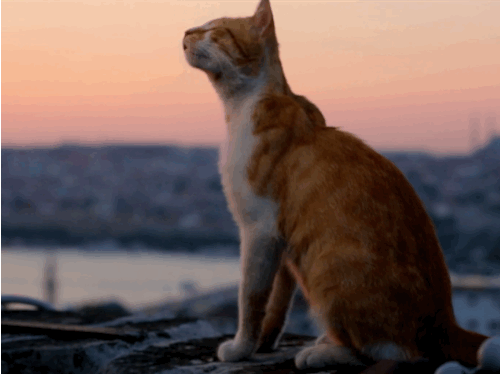Have you ever wondered what the everyday life of a street cat looks like? ‘Kedi’ is an observational documentary film that follows the stray cats of Istanbul through their daily life, soundtracked by interviews of real-life people that become our narrators and storytellers for the history of these cats. The documentary goes beyond the stereotypical aloofness and independence of the cats by bringing them alive as individuals, as we follow the daily antics of seven different cats that each possess individual traits; from the ‘fish thief’ to the ‘flirt’, each cat is personified with their own personalities and habits by the people who care for them.
By exploring the street cat’s position as living between wild animals and domesticated pets, the documentary ‘Kedi’ showcases an understated insight into the bond between humans and animals in the city by showing the community of cats that live in tandem with the shopkeepers, cafe owners and everyday citizens of Istanbul. As one interviewee remarks, ‘The cat embodies the indescribable chaos, the culture and the uniqueness that is the essence of Istanbul. Without the cat, it loses part of its soul’ recounting the ways in which people and cats coexist with each other, benefitting from one another in various ways. The cats of Istanbul are an integral part of the identity of the city, bringing joy and purpose to those that they choose to, and often allowing people to reflect on their own lives and their place in the world.
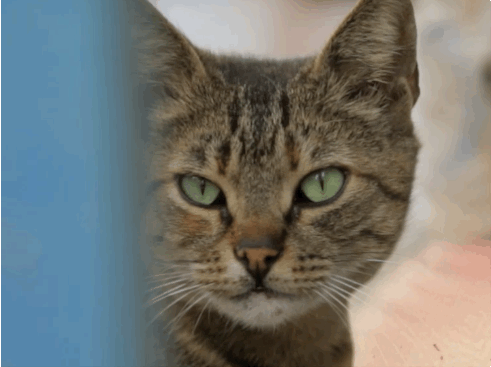
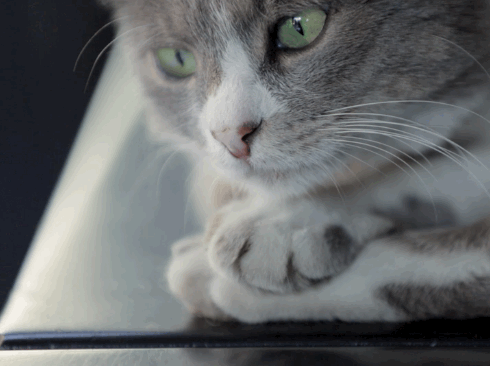
Figure 2 – An off-kilter closeup shot of a cat (Gif)
One of the main ways that the documentary manages to encapsulate the lives of the cats of Istanbul is through its camera work. Low-to-the-ground cameras capture the elegant way that cats meander through the city by mimicking the bearings of a cat; through tight and narrow spaces, beneath the feet of people in the markets, through trees and over rooftops of warehouses. By navigating through the city from a low camera perspective, the viewer is able to see the city of Istanbul through the eyes of the street cats as the camera follows them with precision, yet without disrupting their daily routines. The use of off-kilter close-up shots is also effective in demonstrating the personalities of the cats we meet, as the camera takes time to capture the faces of the cats individually. The camera appears to look into the eyes of the cats that are each seemingly filled with the wisdom and mythology of the city, providing a striking admiration and respect for the felines of Istanbul.
In certain moments, night vision is used to explore the lives of these cats further, beyond the typical gaze of people in Istanbul. One particular example of this comes as a cat who earns his keep at a local restaurant by dealing with a mouse problem hunts down a mouse in a sewer, with the night vision shots showing the cat as it drops down into the sewer from the street, and then prepares to hunt the mouse. However, the camera instead captures the mouse hiding off in a nearby pipe and out of the eyeline of the cat, who reluctantly admits defeat and returns to the street unsuccessful in their hunt, yet is still rewarded by the cafe owner with scraps of food. In this instance, the night vision shots allow the viewer further insight into the wild nature of the cats, whilst also seemingly demonstrating that the cats’ necessity to hunt for survival has been replaced by their ability to charm people into providing them with food instead.
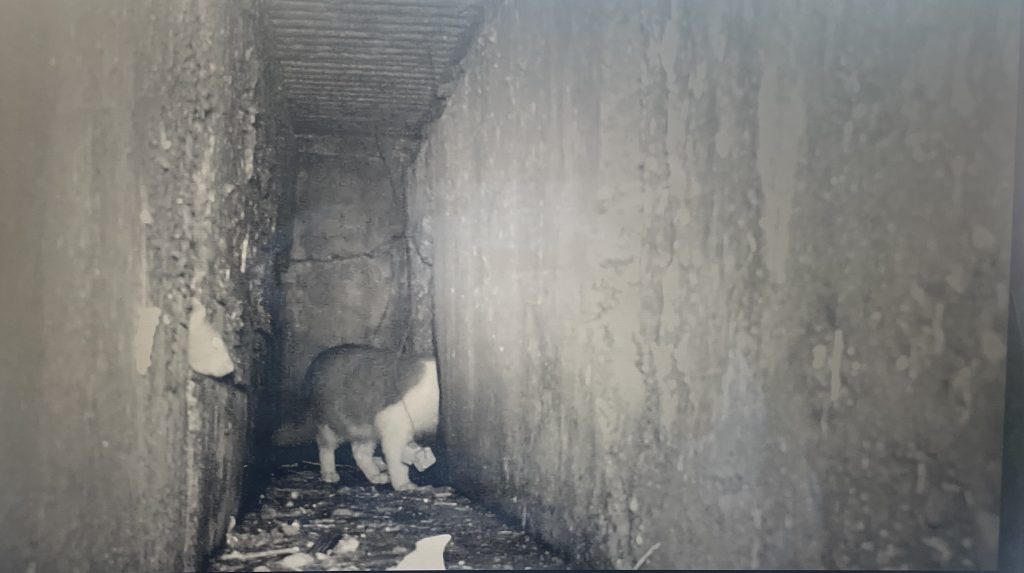
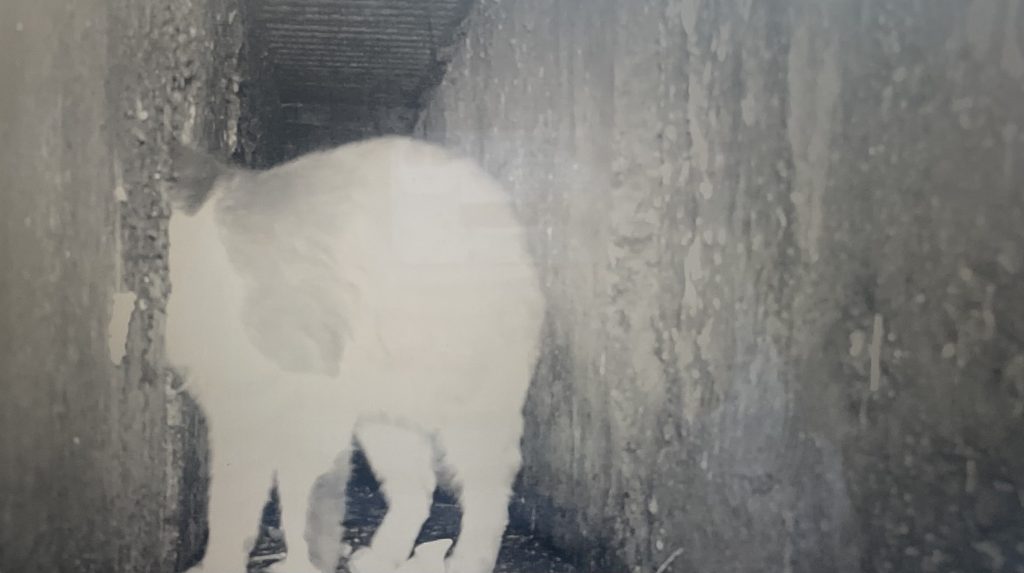
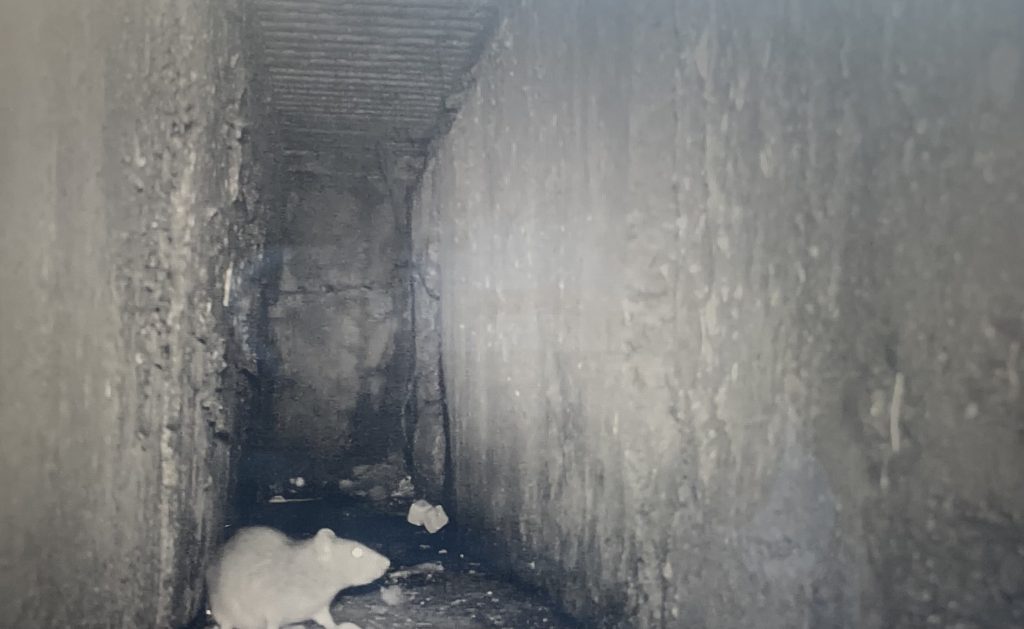
.
….
….
….
…
Finally, the use of drone shots provides a stark opposition to the low camera angle, helping to contrast against the point of view camera angles from the cat’s perspective and instead making them appear small in comparison to the rest of the community, whilst also reminding us of the scale of stray cats in Istanbul. The sweeping shots of Istanbul from above show the scale of the city in contrast to the earlier perspectives of the cats from an omniscient perspective, connecting the sprawling city to the individual lives of the cats and thus reminding us that the seven cats that we meet in the documentary are merely case studies in a wider population of street cats that all have their own individual stories and companion. The documentary has a tentative way of capturing the personality of the cats and the city they inhabit, respecting the mythology and folklore that they embody. Therefore by adopting a variety of camera techniques to provide a broader scope of perspectives, the documentary is able to observe the relationship between cats and humans in Istanbul in an effective manner by navigating the city of Istanbul through the eyes of a cat.
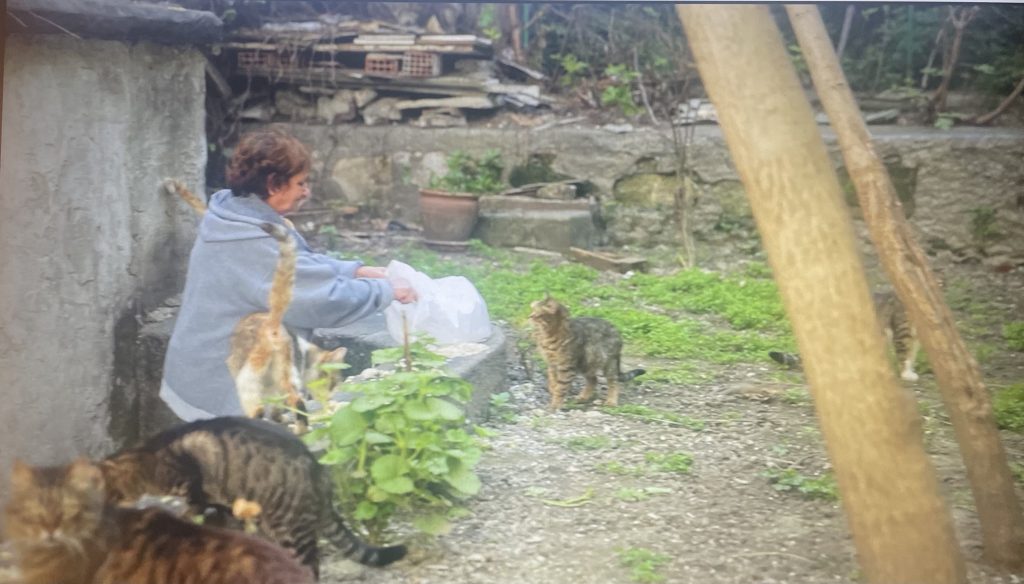
The people of Istanbul helpto imbue the cats that roam the streets with personalities as much as anything the cats actually do. They lend their own experiences to the documentary, explaining ways in which their lives have been moved by the street cats of the city by adopting the roles of caretakers, friends, family and acquaintances of the feline population. Each interview presents a different perspective on the way that the cats of the city have moved them, with the people of Istanbul collectively feeling as though it’s their responsibility to care for the cats in return for their companionship. In one example, a man talks about how the tips he earns from his bakery are used to cover vet bills for his favourite stray cat who is affectionately nicknamed ‘carefree’ by the baker, demonstrating the selflessness and connection the people feel to their feline friends. Another woman speaks about the fact that she hand cooks batches of chicken daily to distribute to the street cats, taking comfort in the fact that the cats wait for her to dish out their meals, and greet her with pleasant affection. (Fig. 6) The style of interview within ‘Kedi’ is effective in establishing the narrative behind human-animal relationships due to the fact that the interviewees are allowed to indulge in their own experiences without interjection from interviewers at all. Because of this, the interviews become more like narrations and the interviewees become storytellers, with their words often relayed over footage of the cats in action, or clips of themselves interacting with the cats that they admire.
Within the city of Istanbul, people go above and beyond in order to care for the cat population. It is not uncommon for people to set up donation points to collect for vet bills, or to cover the costs of food for those who keep the cats fed. In one shot, a sign that is placed above a bowl full of water translates to read that ‘These Cups are for Cats and Dogs. If you don’t want to be desperate for a cup of water in the next life… don’t touch these cups’ (Fig. 7). The implication of the afterlife being affected by actions in current life helps to mythologise the cats further by insisting that it is the responsibility of the people of Istanbul to care for them in this life in return for success in the next. Many people feel as though they are indebted to the cats due to the fact that they keep rodent problems on the streets under control, particularly in urbanised areas of the city. Through this, we learn something about how these cats fit into the philosophy of the people who go to great lengths to take care of the population of stray cats without the intention of domesticating them in any way. Whilst the human-animal relationship in Istanbul appears to be transactional on the surface – with the cats receiving food and affection in return for keeping rodent and sewage problems under control – the cats seem to provide the people of Istanbul with joy, purpose and comfort both in this life and the next.
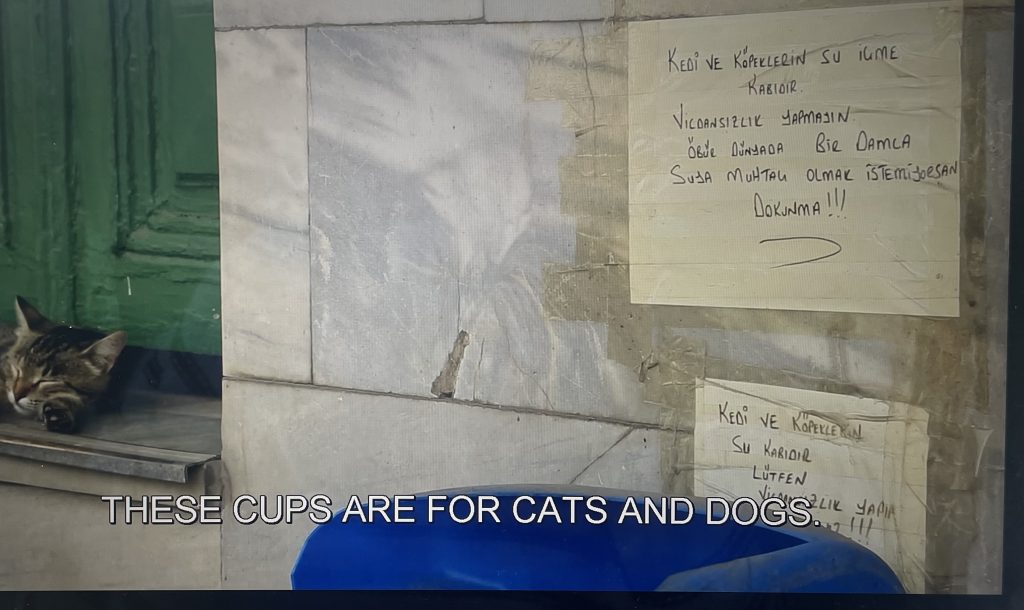
Throughout the documentary, we see different sides to the feline population, with examples of cats being affectionate, tough, dignified, vulnerable and resourceful, soundtracked by the people who love and care for them. Each cat appears to have their own personality that has been given to them by their caretakers, building context for their companions that goes beyond what outsiders would assume of cat-human relationships; some people humanise the cats to be ‘gentlemen’ or ‘fish thiefs’, others canonise them by rooting them in a deep folklore of protection and the afterlife. For example, Psikopat – who is regarded as a ‘Psychopath’, due to her overly assertive nature – has her own personality, nickname and set of routine and rituals that are given to her by a local fishmonger. In his interview, he details ways in which Psikopat has a ‘husband’ who she likes to keep in order, which is accompanied by footage of her batting him away from a feeding bowl so that she can eat before him. The fishmonger continues by explaining that she will argue with other cats, and is possessive over her husband, often returning to him with a beat up face, or with cuts over her body due to her confrontational nature. She also has a tendency to argue with people, and is seen to follow and hiss at people she does not take a liking to. The interview-voiceover dictates that she likes tough love, and that she does what she wants without compromising her freedom, a trait that he believes all humans should have themselves. Despite the negative implications of the fishmonger anthropomorphising Psikopat to have human characteristics taking away from her inherent animality, due to the fact that people often see the best of humanity within the cats – or desirable traits that they wish to see in other people – there is a suggestion that the people of Istanbul learn as much from the cats as the cats do from them. Psikopat is seen to fear nobody, gaining the respect of the fishmonger in return for her strong and uncompromising demeanour, something he wishes to emulate in his own life.
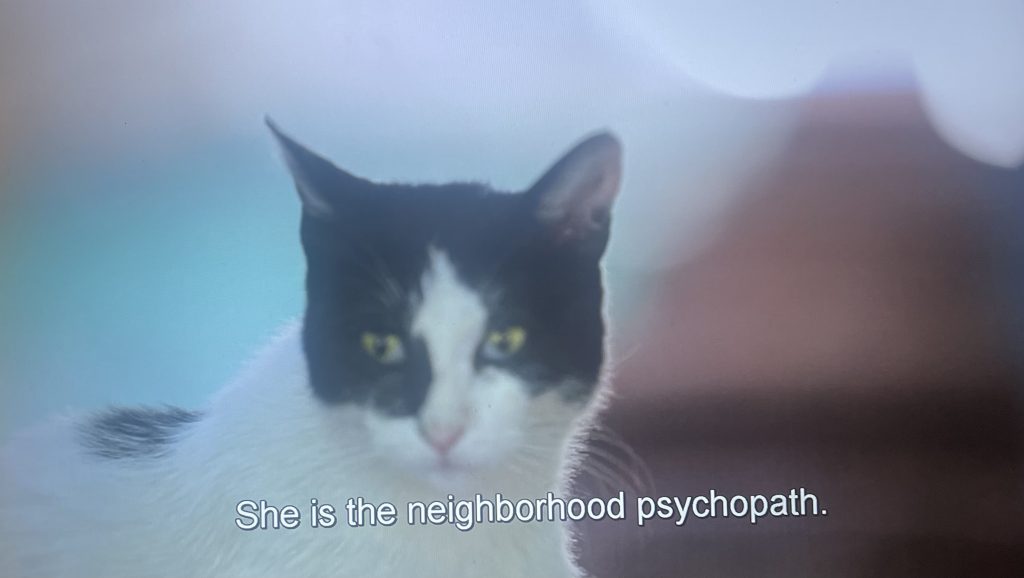
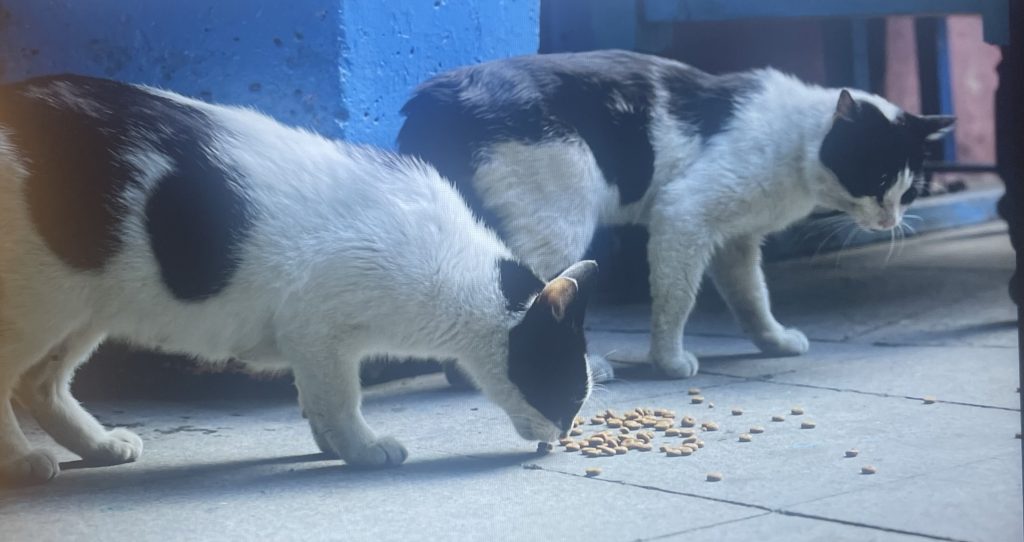
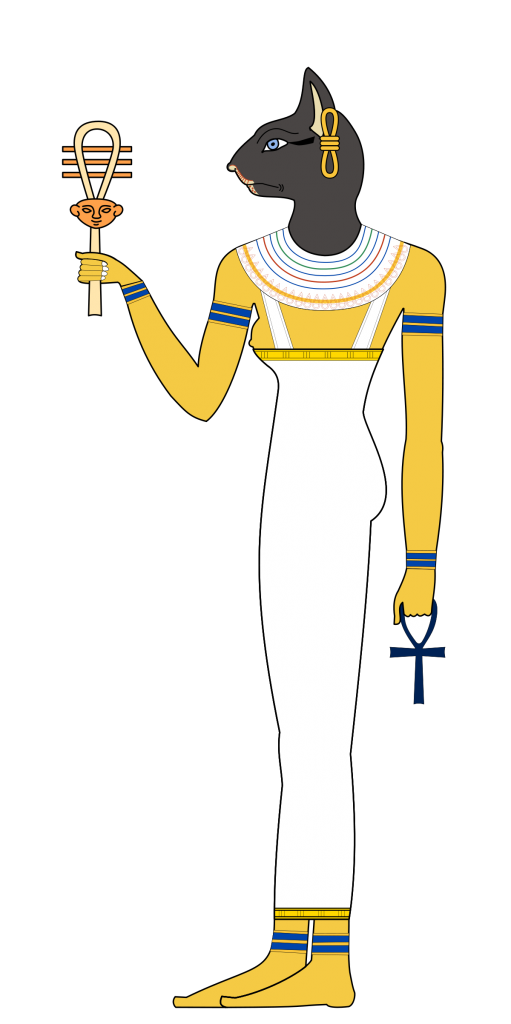
In another interview, a young woman marvels at the way that the cats of Istanbul have a majestic way about them that is ‘divinely feminine’, exploring her own struggles to ‘embody [her] femininity in Turkey’s social environment’, which is something the cats seem to do ‘gracefully’, thus inspiring her own confident expression of femininity. The symbolic gendering of cats relates back to ancient Egypt, that Ackroyd explains to be based on ’’a feminine mystery that represents the positive, creative, and in particular fecund aspects of femininity based on the divinity of the Egyptian God of Cats, Bastet” (Ackroyd, 1993). By exploring the gendering of cats as feminine, which is rooted in folklore and mythology, the young woman explores ways in which she resonates with the feline population, and takes inspiration from their ‘creative…feminine mystery’.
She then moves on to discuss her relationship with the stray cats by explaining that through showing affection and petting them, she feels as though she is communicating with them through a shared, secret language. Through the ‘shared language’ of endearment, she moves on to suggest that people who can’t love animals are incapable of loving other humans too. In this moment, the filmmakers demonstrate that despite the sentiment of the people of Istanbul, the cats in fact do not return this view by cutting to a clip of a cat hunting a bird, and therefore reminding the viewer of the biological difference between cats and humans by exploring the liminal space the cats occupy between wild and domesticated animals. Despite the fact that the cats live in tandem with the people of Istanbul and often show affection towards their caregivers, ultimately they are wild animals that will hunt based on their instincts with no regard to loving other animals.
Through interviews with the everyday people of Istanbul, ‘Kedi’ is a documentary that explores the ways in which cats embody ‘the uniqueness that is the essence of Istanbul.’ Despite the fact that the documentary often indulges in peoples temptation to view the cats in terms of human personality, it also manages to explore the fact that the concerns the people of Istanbul have for the felines of the city are also the concerns they have for other people; by living together, people are able to solve their own problems by solving the problems of the cats. Ultimately, the street cats are an integral part of the identity of Istanbul, and the caregivers and companions refuse to domesticate the animals in any way, allowing them to roam freely through the streets.
Bibliography –
- Ackroyd, E. (1993). A Dictionary of Dream Symbols with an introduction to dream psychology, London: Cassell.
- Kedi, dir. Ceyda Torun (Termite Films, 2016), online film recording, Prime Video <https://www.amazon.co.uk/gp/video/detail/B07SSVXLRV/ref=atv_wl_hom_8_c_unkc_1_1> [accessed 19 Jan 2023]
- Wikipedia contributors, ‘Batet’ Wikipedia, The Free Encyclopedia, <https://en.wikipedia.org/wiki/Bastet > [Accessed 19 Jan 2023]
Further Reading list –
Carlin, Andrew, ‘Kedi’, 2017 <https://www.kedifilm.com/about#header> [Accessed 19 Jan 2023]
Conway, D.J, ‘The Mysterious Magickal Cat: Mythology, Folklore, Spirits, and Spells’ (U.S: Llewellyn Publications, 2018)
Larson, Vanessa H. “Kedi: Documentary Profiles Istanbul’s Famed Street Cats”. The Washington Post, 2017, <https://www.washingtonpost.com/goingoutguide/movies/kedi-documentary-profiles-istanbuls-famed-street-cats/2017/02/23/c9ed6b4c-f60c-11e6-8d72-263470bf0401_story.html> [Accessed 19 Jan 2023]
Powers, John, “Ode to the Street Cat: Kedi Follows Istanbul’s Famous Felines”. NPR, 2017 <https://www.npr.org/2017/02/15/515188621/ode-to-the-street-cat-kedi-follows-istanbuls-famous-felines> [Accessed 19 Jan 2023]
Stefansky, Emma “The Famous Cats of Istanbul Take Center Stage in Kedi“, Vanity Fair, 2017 <https://www.vanityfair.com/hollywood/2017/02/istanbul-cats-kedi-documentary> [Accessed 19 Jan 2023]
Database –
The key film data: Kedi, Ceyda Torun, 2016, Oscilloscope Laboratories
A list of every kind of animal with a presence in the film ; Cats, Dogs, Mice.
A list of every major focus of human-animal encounter ; Animal Agency, Care-taking, Pet-Keeping, Animal Protection, Stray animals.
A list of each relevant film genre; Documentary, Feature Length.
